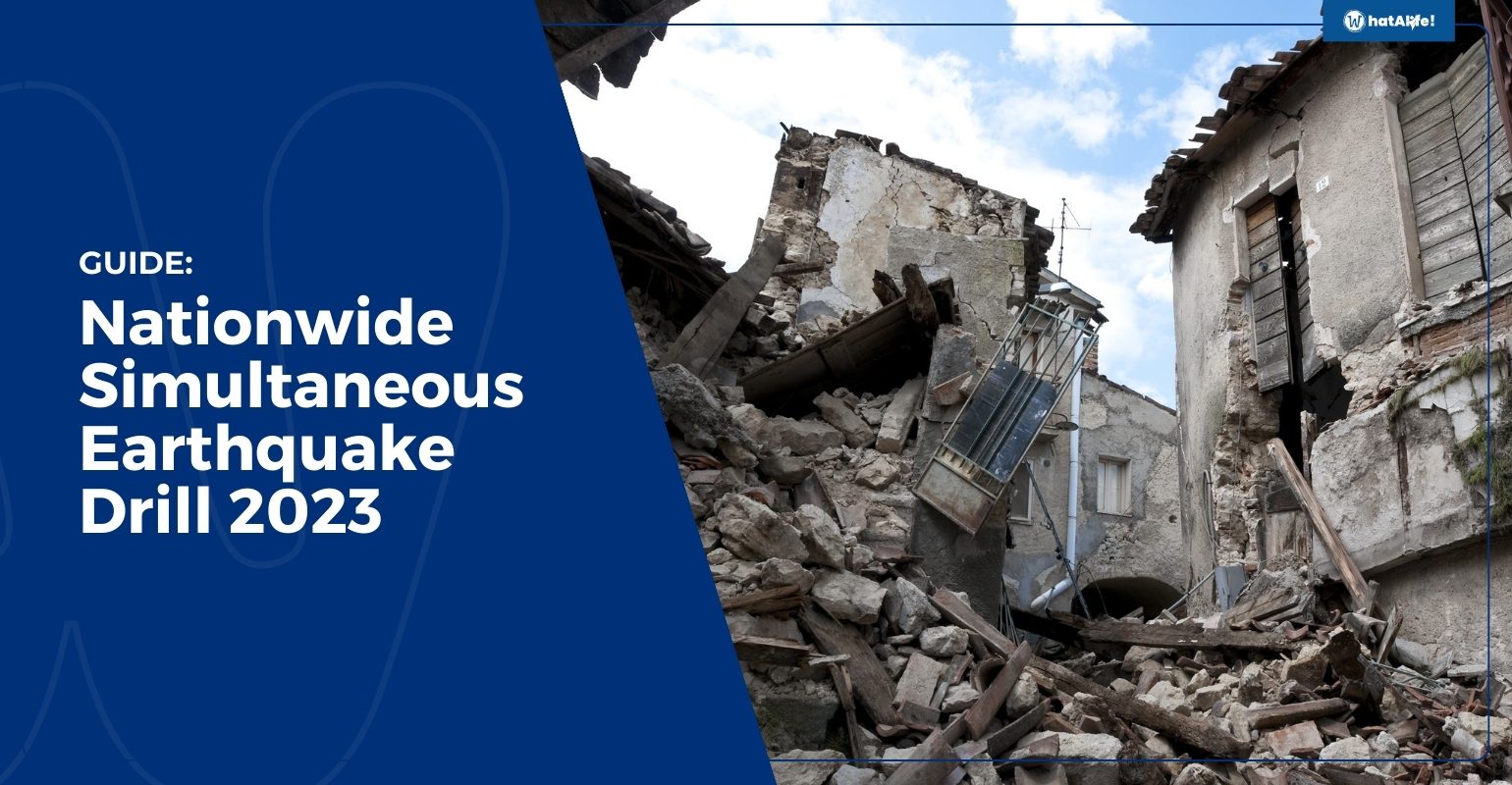In lieu of the recent earthquakes off the southern Philippines, it’s essential to prepare the public with the safety procedures of earthquake drills. Considering earthquakes happen with no warning, knowing what actions to take can minimize or prevent casualties from happening. With that in mind, let’s discuss proper earthquake drill procedure and the steps on how to conduct an effective response for the community.
Table of contents
What is a simultaneous earthquake drill?
A simultaneous earthquake drill is a planned and coordinated emergency activity that prepares individuals and communities on how to respond in case of an earthquake. The term “simultaneous” implies that the earthquake drill occurs at the same time across multiple locations, such as cities, schools, businesses, or entire regions.
The drill aims to simulate a realistic earthquake scenario to educate participants on what to expect. This involves using evacuation procedures, emergency alerts, search and rescue operations, and medical response efforts. As a result, it ensures a comprehensive and well-coordinated response for the community.
What is the purpose of the nationwide simultaneous earthquake drill?
The purpose of a Nationwide Simultaneous Earthquake Drill is to enhance the public awareness, response, and overall effectiveness of the procedure in the event of an actual earthquake. It aims to protect the public from acquiring injuries or the possibility of death by providing guides on how to proceed on specific scenarios.
Conducting earthquake drills annually helps the public and response team practice and refine emergency procedures in a controlled and simulated environment. It also tests the communication and coordination efforts of emergency services of medical teams, fire departments, and law enforcements with their disaster response.
Is earthquake drill mandatory in the Philippines?
According to the Department of Education, unannounced earthquake drills are mandatory in public elementary and secondary schools in the Philippines. It’s required that they conduct the drill every first and third week of the month in coordination with the Head of the school and their School Disaster Risk Reduction and Management (SDRRM) Coordinators.
Although it’s not mandatory, other schools, universities, institutions, businesses, and organizations are encouraged to conduct the procedure during the Nationwide Simultaneous Earthquake Drill event in the Philippines to promote awareness and enhance community resilience.
What to do during an earthquake
If indoors during an earthquake, one should remember the phrase “Drop, Cover, and Hold”. It denotes dropping to your hands and knees to reduce the chances of getting knocked down or hit by nearby falling objects.
As much as possible, protect your head with your hands and look for a sturdy surface to take shelter. This could be a desk or table, but if they’re not within reach crawl next to an intact and sturdy interior wall. Hold on to the shelter with one hand until the earthquake stops, if shelter is unavailable remember to cover head and neck with hands to protect vital organs.
Steer clear of doorways since the frame can collapse and they don’t provide secure protection. Also, avoid going outside since objects and buildings have a higher chance of collapsing and causing injuries.
How to conduct an earthquake drill
If an institution or organization intends to conduct an earthquake drill, below are steps on how to conduct an effective and comprehensive procedure.
Planning
The first step to preparing an earthquake drill is to create a disaster management committee within the community or organization. This helps the coordinator delegate the tasks and responsibilities, ensuring every aspect of the earthquake drill will be covered. This includes forming groups for communication, building inspection, first aid, fire safety, evacuation, and site security. Coordinating with local government units from relevant departments or organizations is also encouraged to ensure the safety and effectiveness of the procedure.
Developing
The next step is to develop a documented emergency plan. This should include assembly points, evacuation routes, communication protocols, and roles and responsibilities for the staff and participants. Assess unsafe zones in the area to help create a safe evacuation route, avoiding narrow alleyways and furniture that might break or topple over during an earthquake. Objects that make a safe unsafe are the presence of glass, window panes, machinery, bookshelves, and cabinets.
Briefing
Once a comprehensive plan is in place, the next step is to conduct pre-drill briefings and lectures to the staff and participants to ensure they’re aware of the drill objectives, their roles, and steps to follow. Posting the evacuation map on accessible areas is also good practice to enhance awareness.
If possible, assigning observers and evaluators during the drill is also a good idea to help identify areas of improvement in the plan.
Conducting
Set a date and time to conduct the earthquake drill to prepare the staff and community members. Simulate an earthquake scenario by using alarms, signals, or sirens to signal the start of the drill. Encourage participants to perform the “Drop, Cover, and Hold” technique and initiate evacuation procedures. Don’t forget to test the emergency communication systems and simulate search and rescue operations to assess the emergency response of the team.
Document the results and share the feedback and observations with the community to promote transparency and a culture of continuous improvement.
Final Thoughts
Participating in the annual Nationwide Simultaneous Earthquake Drill helps foster a culture of safety for the citizens of the Philippines. It helps enhance public awareness by educating them with the proper procedures and precautions in the event of an earthquake. It also helps identify the areas of improvement i n the procedures to create more safe and efficients steps for evacuating and responding to emergencies. With constant practice and cooperation, individuals and communities are motivated to incorporate preparedness to their daily lives.
Also Read: Consecutive earthquakes occur in Mindanao

Leave a Reply